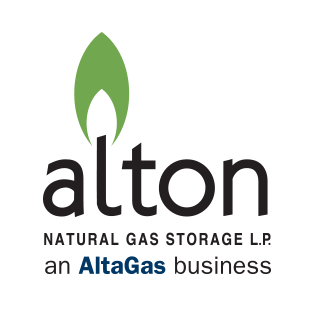Natural gas would move to and from the Alton facility by a pipeline. The pipeline would connect the Alton project to the Maritimes & Northeast Pipeline (M&NP) system that delivers natural gas to Nova Scotia.
Pipeline approval
The Environmental Assessment (EA) for the pipeline was approved in May 2013 and included a Mi’kmaq Ecological Knowledge Study.
Standards
The Alton pipeline will be designed, constructed, operated and maintained following the latest edition of the Canada Standards Association (CSA) Standard Z662 – Oil and Gas Pipeline Systems, the national standard for pipelines in Canada.
Safety
Thick steel is used to build the pipeline. The steel is heavily coated with epoxy layers to protect it from corrosion. Technology called ‘sacrificial anodes’ is used (and replaced under the regular pipeline maintenance program). The anodes corrode instead of the steel pipe, ensuring the integrity of the pipeline for many decades.
Welds and valves
All connecting pipeline welds are x-rayed to ensure safety. Valve stations are installed at each pipeline end along with facilities for flow control, gas metering and isolation for safety and maintenance. Valve stations will be fenced for safety and security.
Training, notifications and signage
We will work with local first responders before the pipeline starts to operate to ensure they are familiar with emergency procedures. Signage will be posted along the pipeline corridor, including emergency contacts and call-before-you-dig information.
Respecting the environment
To minimize its environmental footprint, the pipeline will follow deforested land, existing roadways and trails wherever possible, avoid wetlands and by-pass private lands. The pipeline route crosses a proposed wilderness area, but much of the route is on previously impacted land including clear cuts.
We are also developing a conservation plan with direction from the provincial Department of Environment.
Surveys and preparation
Field surveys for the pipeline were conducted in 2015-2016, plus a field review in December 2017. Additional field surveys took place in late 2018 and further field work in 2019 included an archaeology review to help confirm the final route, including the location of wetlands in the spring. In 2020, the pipeline corridor routing and centerline surveys were completed.
Construction
Steps include permitting through various provincial and federal jurisdictions including the Nova Scotia Utility and Review Board, topographic, environment and geotechnical surveys, clearing and grubbing and construction of temporary access roads only if required.
During construction, a temporary trench is dug within the pipeline right-of-way. Sections of pipe are placed alongside the trench. The sections of pipe are welded together, lowered into the trench and then backfilled with the conserved soil. The surface is restored by returning the excavated sod. Additional seeding and restoration may be required.
Crossing the Stewiacke River
A well-established technique will tunnel the pipeline underground from one side of the river to the other. River banks, the river bed and the water are not disturbed. Technology like this was used under Halifax Harbour to connect natural gas service between Halifax and Dartmouth, and has been used hundreds of times in Nova Scotia and all over Canada.

